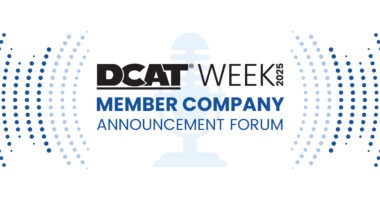The Top 50 Most Innovative Companies: How do Pharma Companies Rank?
Research and development (R&D) and new product development are the hallmarks of the pharmaceutical industry, but where do pharmaceutical companies place among the most innovative companies? A recent analysis by Boston Consulting Group (BCG), which ranks the Top 50 Most Innovative Companies, shows limited representation by pharma companies.
Eleven of the 50 companies named in BCG’s 2018 ranking of the most innovative companies are digital companies as are seven of the Top 10. Only three pharmaceutical companies were in the Top 50, along with three chemical companies and three consumer product companies. So which companies made the mark?
Inside the rankings
Apple, Google, Microsoft, Amazon, and Samsung top the list of the world’s 50 most innovative companies, according to a survey by The Boston Consulting Group (BCG) of more than 1,000 senior innovation leaders from a wide variety of countries and industries. The findings of the survey are detailed in a report, The Most Innovative Companies 2018: Innovators Go All In on Digital. Eleven of the 50 most innovative companies—including seven of the Top 10—are digital natives, meaning that they have always been digital businesses with digital offerings. Two digital natives pushed their way into the Top 10 in 2018: Alibaba Group, a Chinese technology multinational, which joined the Top 50 for the first time, and Uber. Among the Top 20, Tencent, a provider of Internet value-added services in China is new to the list, and Airbnb, SpaceX, Cisco Systems, Orange, and Marriott moved up significantly. Overall, 12 companies either joined the list or returned to it in 2018. Most companies on the list have built digital technologies into their innovation programs.
The rankings for Boston Consulting Group’s Top 50 Most Innovative Companies are outlined below.
The Top 10: : 1. Apple; 2. Google; 3. Microsoft; 4. Amazon; 5. Samsung; 6. Tesla; 7. Facebook; 8. IBM; 9: Uber; 10 Alibaba.
Rankings 11-20: 11. Airbnb; 12. SpaceX; 13. Netflix; 14. Tencent; 15. Hewlett-Packard; 16. Cisco Systems; 17. Toyota; 18. General Electric; 19. Orange; 20. Marriott.
Rankings 21-30: 21. Siemens; 22. Unilever; 23. BASF; 24. Expedia; 25. Johnson & Johnson; 26. JPMorgan Chase; 27. Bayer; 28. Dow Chemical; 29. AT&T; 30. Allianz.
Rankings 31-40: 31. Intel. 32. NTT Docomo; 33. Daimler; 34. AXA; 35. Adidas; 36. BMW; 37. Nissan; 38. Pfizer; 39. Time Warner; 40. Renault.
Rankings 41-50: 41. 3M; 42. SAP; 43. DuPont; 44. InterContinental Hotels Group; 45. Disney; 46. Huawei; 47. Procter & Gamble; 48. Verizon; 49. Philips; 50. Nestlé.
One standout takeaway from the rankings according to the BCG study is that companies are focusing significantly more than in the past on four elements of digital innovation: Big Data analytics, the fast adoption of new technologies, mobile products and capabilities, and digital design. Meanwhile, other areas of innovation—such as new products and new services—have become less of a focus for innovation executives.
Of the Top 50 most innovative companies, only three pharmaceutical companies made the top list. Johnson & Johnson ranked twenty-fifth, Bayer ranked twenty-seventh, and Pfizer came in at thirty-eight.
For related industries, three consumer product companies made the cut: Unilever (ranked number 22), Procter & Gamble (ranked number 47), and Nestlé (ranked number 50). Three chemical companies made the Top 50: BASF (ranked number 23) and The Dow Chemical Company (ranked number 28) and DuPont (ranked number 43) (Note: the merger of Dow Chemical and DuPont was completed in August 2017).
Inside the innovation leaders
The report describes a gap, which may continue to widen, between strong innovators and weak innovators in terms of their ability to make the most of digital technology. For example, while 79% of self-defined strong innovators reported that they have properly digitized innovation processes, only 29% of weak innovators made the same claim. More than one-third of survey respondents said that digitized processes aren’t really doing much for their company—a sign that they haven’t yet found a way to embrace the new possibilities. Moreover, the largest gaps between strong and weak innovators occur with regard to the embrace of digital-innovation techniques.
Strong innovators are disproportionately investing in digital technologies. For example, 43% of strong innovators are actively investing in Big Data versus 26% of weak innovators; 42% of strong innovators are actively investing in mobile capabilities versus 16% of weak innovators; and 39% of strong innovators are actively investing in digital design versus 14% of weak innovators.
Moreover, strong innovators were much more likely to report that their organizations embrace key elements of the agile product development approaches that characterize digital leaders. Eight out of 10 strong innovators reported that they take steps to bring together, in one place, cross-functional teams that include people with a full spectrum of relevant skills. By contrast, at weak innovators, only 35% of teams work in the same place, only 41% have all the relevant functions represented, and only 43% contain people with all the relevant skills.
”Digital technologies present a trifecta of innovation challenges: they blur boundaries and invite new competitors, they increase the speed of innovation, and they lower the cost at which new competitors can enter a market to seize share,” said Hadi Zablit, a BCG senior partner and a co-author of the report. “Traditional companies, no matter how large, can’t afford to pursue innovation, R&D, and product development in traditional ways. To do so cedes competitive advantage to the disruptors. All companies need to determine their own digital strategies and start playing the innovation game by today’s rules.”






